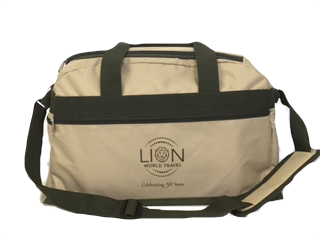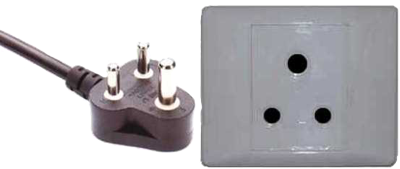How to Pack for Your Safari: Lucille Sive's Expert Guide to Packing
By Lucille Sive
I have been on numerous safaris over the past years and I have my packing down to a fine art! So I thought I would share some of my suggestions and packing experience with you.

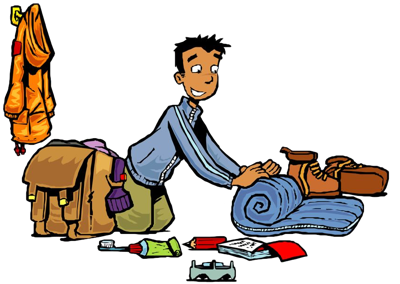 The weather conditions on safari can be cool at one time of day and mild later on. I have found that being prepared with the right kind of clothing to protect you against dust, insects and hours of direct sunlight allows you to focus on your safari experience in comfort and style.
The weather conditions on safari can be cool at one time of day and mild later on. I have found that being prepared with the right kind of clothing to protect you against dust, insects and hours of direct sunlight allows you to focus on your safari experience in comfort and style.
For first time safari goers, you may be unsure what to pack. My advice: don’t over pack! International flights have a higher luggage allowance than many of the smaller planes and safari vehicles, where the amount of luggage you can bring is limited, so with that in mind; the safari packing guideline below will help you to pack only the necessary items.
Pick the Right Safari Luggage
The thing to remember when choosing safari luggage is mobility. You will probably be moving between several different modes of transport so plan accordingly. Suitcases with wheels don't work very well in the African bush. Soft-sided bags are always a good choice because they can fit into a variety of storage compartments. Also when packing you may want to consider that you might leave clothes and other supplies in Africa. A combination luggage lock is a good idea; all you have to do is remember the combination and not worry about where you put the keys. A daypack is very handy to carry the items you need while driving around in the safari vehicle or walking through the bush.
The Lion World Travel safari bag was designed by Mr. Stanley Tollman (Founder and Chairman of The Travel Corporation). It has a large capacity, with a base so that it stands up and is easy to pack.
Bring Safari Ready Clothing
Out in the African bush, you have to leave some of the comforts of home behind. That is why it is important to pack as sensibly as you can. Think about packing subdued, earthy and neutral colored clothes, lightweight and airy fabrics which are breathable and have moisture wicking properties. You will feel much more comfortable, especially since you will probably be in the same clothes all day. The temperatures out in the bush can vary greatly, so I say dress like an onion, in layers. Some of the camps offer a laundry service at a charge and some include the service, but certain camps will not wash underwear.
My Suggested Packing List:
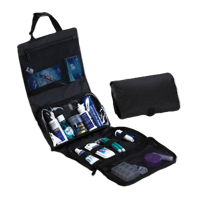
- Good quality sunglasses - preferably polarized.
- Sun hat that has a wide brim to provide complete coverage, it should allow your head to "breathe" and be water absorbent – choose one that can be packed flat
- Golf-shirts, T-shirts - short and long-sleeved cotton shirts
- Shorts
- Long trousers and pants as the evenings can be chilly (they are also good for keeping mosquitoes and other insects at bay)
- Track suit
- Warm sweater / sweatshirt
- Warm waterproof jacket and scarf / gloves for cold winter months (May to September) for the early mornings and after sunset
- Light rain gear for summer months (late Nov to April)
- Other items such as underwear, socks and pajamas
- Comfortable safari hiking/walking shoes (not white). These are very important on a walking safari.
- Extra shoelaces
- Flip-flops or sport sandals for around the lodge or pool
- Bathing suit
- Copy of your passport, kept in a separate place than your passport
And then some of the other important items that are very useful and necessary when you are out in the bush:
- Prescribed medicine (enough to last your trip) - keep this packed in your hand luggage in case of baggage delays. Make copies of prescriptions just in case you need to refill.
- Consult your doctor about Malaria medication before your trip and do not forget to pack it.
- An extra pair of glasses can be a lifesaver - it may be too dusty to wear contact lenses.
- Packing a small flashlight or head lamp is always a good idea. These days a lot of phones have flashlights as well.
- Plastic bags (for wet washing/muddy shoes/organize clothes in suitcase)
- Toothbrush/toothpaste/dental floss
- 2-in-1 shampoo/conditioner, tweezers, lip balm, Q-tips and cotton balls, razor and shaving cream/gel
- High SPF sunscreen (between 30 and 50)
- Hand sanitizer wipes are most useful for boxed lunches and drinks stop on the early game drive and at sunset.
- Insect repellent is provided by most game lodges - once the sun goes down the bugs come out
- Basic medical kit (aspirins, band aid, Imodium, antiseptic cream, after-bite type of cream and Anti-histamine cream)
- Waterproof/dustproof bags/cover for your cameras
- Plug adaptors - generally in Africa it's 3-prong round or square
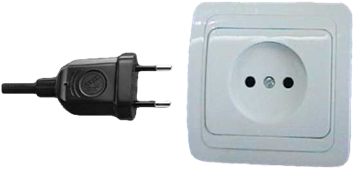
Type M plug (left) and Type C plug (right)
Some supplies might be available in the first aid kit that every safari company should carry. But just remember that while you are on safari, shops are few and far between, and very basic.
Essential Game Viewing Items: Binoculars and Cameras
 On safari everything you see is exciting, even the birds. Sometimes the animals are a little further away, so a pair of binoculars is always a good idea to bring, if you can afford the weight in your luggage. On the other hand many lodges and guides will have binoculars in the vehicles. I suggest Newman's bird book if you are a keen birder.
On safari everything you see is exciting, even the birds. Sometimes the animals are a little further away, so a pair of binoculars is always a good idea to bring, if you can afford the weight in your luggage. On the other hand many lodges and guides will have binoculars in the vehicles. I suggest Newman's bird book if you are a keen birder.
You will be taking lots of pictures. A camera, charger, extra batteries and spare memory cards are imperative.
Record Your Safari Experience!
Lastly – a lot of people like to record their thoughts and feelings in a journal, on a blog or via social media. We love to see your safari pictures and invite you to share them with us on our Facebook, Twitter, or Instagram pages with the hashtag #LionWorldTales or you can email them to us. This year we are running a photography competition with the grand prize winner receiving a GoPro camera! Finalists’ photographs will also be featured in our 2016 calendar.
Click here for more information about the #LionWorldTales Photo Contest.


